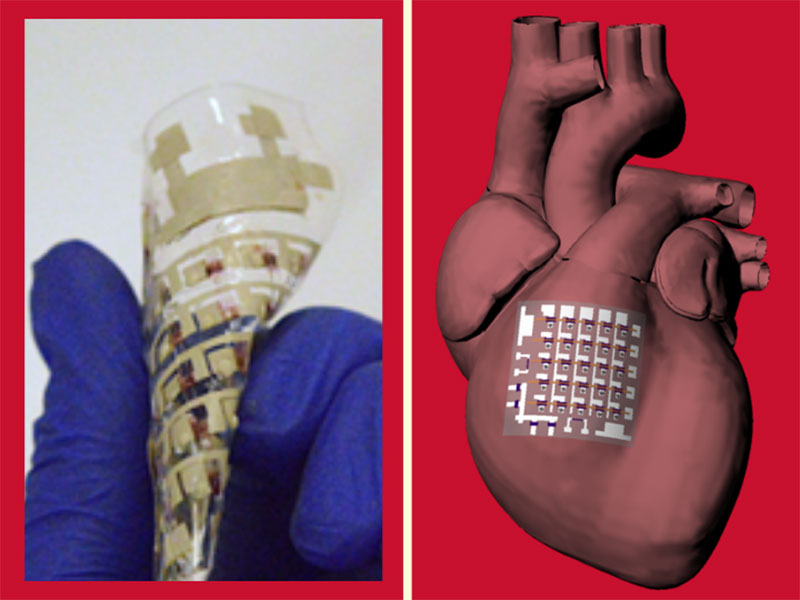Researchers at the University of Houston and colleagues from other institutions have developed a patch made from fully rubbery electronics that can be placed directly on the heart to collect electrophysiological activity, temperature, heartbeat and other indicators, all at the same time. The device can harvest power directly from the movement of the beating heart and its flexibility means that it conforms well with the epicardial surface. That allows it to not just track data for diagnostics and monitoring but to also offer therapeutic benefits such as electrical pacing and thermal ablation, the researchers reported in Nature Electronics.
Read more University of Houston Researchers Develop Super Thin Wearable That’s Barely Noticeable to the Wearer
Cunjiang Yu, Bill D. Cook Associate Professor of Mechanical Engineering at UH and corresponding author for the paper, said the device marks the first time bioelectronics have been developed based on fully rubbery electronic materials that are compatible with heart tissue, allowing the device to solve the limitations of previous cardiac implants, which are mainly made out of rigid electronic materials, reports University of Houston.
“For people who have heart arrhythmia or a heart attack, you need to quickly identify the problem,” Yu said. “This device can do that.” Yu is also a principle investigator with the Texas Center for Superconductivity at UH.

Yu is a leader in the development of fully rubbery electronics with sensing and other biological capabilities, including for use in robotic hands, skins and other devices. The epicardial bioelectronics patch builds upon that with a material with mechanical properties that mimic cardiac tissue, allowing for a closer interface and reducing the risk that the implant could damage the heart muscle.
“Unlike bioelectronics primarily based on rigid materials with mechanical structures that are stretchable on the macroscopic level, constructing bioelectronics out of materials with moduli matching those of the biological tissues suggests a promising route towards next-generational bioelectronics and biosensors that do not have a hard–soft interface for the heart and other organs,” the researchers wrote. “Our rubbery epicardial patch is capable of multiplexed ECG mapping, strain and temperature sensing, electrical pacing, thermal ablation and energy harvesting functions.”
Read more This Wearable Patch May Provide Painless, More Effective Chemotherapy For Melanoma
In addition to Yu, researchers from UH, the Texas Heart Institute and the University of Chicago were involved.












